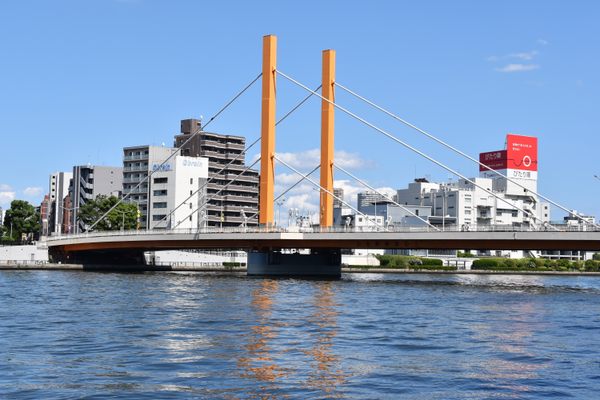Tokyo is a city of rivers, home to thousands of bridges that have been rebuilt numerous times over the centuries. Shin-Ōhashi Bridge, which crosses the Sumida River between the wards of Chūō and Kōtō, may not seem so flashy—except for its bright yellow pillars—but it happens to be something of an icon in art history.
Originally built in 1693, the construction of Shin-Ōhashi was noted by famed poet Matsuo Bashō in a few of his haiku verses. It had been damaged by fires, storms, and floods and rebuilt at least 20 times by 1744, when the government left the local council in charge of the bridge’s upkeep.
In 1856, ukiyo-e artist Utagawa Hiroshige depicted Shin-Ōhashi in his woodblock print Ōhashi Atake no yūdachi, or “Sudden Shower over Shin-Ōhashi Bridge and Atake,” part of the series One Hundred Famous Views of Edo. Considered a masterpiece, thousands of prints were exported to Europe, influencing many would-be Impressionist artists of the Japonisme era.
One of those artists was Vincent Van Gogh, an avid collector of Japanese prints. He painted his own versions of some of them, including Ōhashi-Atake, to experiment with compositions.
The exact bridge depicted in these artworks, however, is no longer there. It was replaced by a Western-style wooden bridge in 1885, then by an iron one with Art Nouveau features in 1912, which was nicknamed the “life-saving bridge” because it stayed undamaged in the great earthquake of 1923 and provided shelter for the victims.
The current bridge was completed in 1977, and is located about a hundred meters downriver from the original site. Though a striking feature of the area, few recognize it as the art icon that once took the scene by storm.

